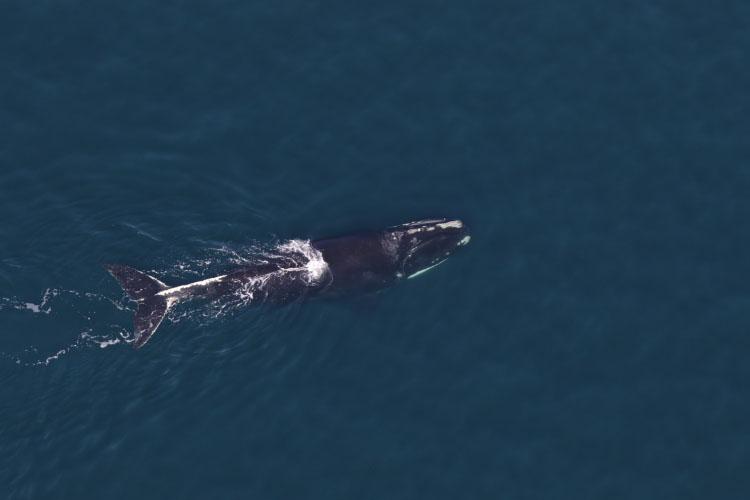The U.S. government will spend an unprecedented $82 million in an effort to help the endangered North Atlantic right whale recover.
The U.S. Department of Commerce and the National Oceanic and Atmospheric Administration (NOAA) announced Monday that the $82 million in funding comes from the Inflation Reduction Act, a recently passed federal law which “aims to curb inflation by possibly reducing the federal government budget deficit, lowering prescription drug prices, and investing into domestic energy production while promoting clean energy.”
There are less than 350 North Atlantic right whales left, and of those, only 70 are reproductively active females. NOAA says the primary threats that are pushing the species close to extinction are entanglements in fishing gear and vessel strikes.
The funding will be used to focus on technology—both existing technology like passive acoustic monitoring along the East Coast and new technologies like equipping vessels with whale detection and avoidance tools.
“During the past decade, right whales have changed their distribution patterns, spending more time in areas with fewer protections from vessel strikes and entanglements,” said Janet Coit, assistant administrator for NOAA Fisheries. “…This funding allows us to invest in technologies to reduce the risk of vessel strikes, increase the use of on-demand fishing gear and improve enforcement of existing federal regulations.”
Right whale protection has become a controversial topic in the past year. Since NOAA proposed tightening offshore speed limits to include boats as small as 35 feet, there have been critics from the boating industry and hearings on Capitol Hill. Conservationists argued the speed limit is necessary and should be instituted immediately.
The new funding hones in on things like high-resolution satellite information to better understand where right whales spend time and how they use their habitat. The majority of the funding (about $35.8 million) will go toward passive acoustic monitoring, modeling, a satellite tagging program, and satellite artificial intelligence.
Another $20 million will be used for whale detection and avoidance technology. The rest will go towards enforcement efforts and furthering on-demand fishing gear technology.
It’s all part of NOAA Fisheries’ Road to Recovery for North Atlantic right whales. An Unusual Mortality Event was declared for the species in 2017 and since then, 115 North Atlantic right whales have been documented as dead, seriously injured or in poor health.
-Meg Walburn Viviano




